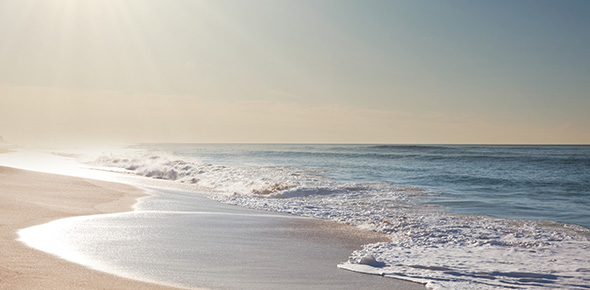Streamlike movements of water that occur at or near the surface of the...
What are the three factors that affect surface currents?
Surface currents can reach depths of several hundred meters and...
Different Winds cause currents to flow in different directions?
Deep currents form in parts of the ocean where water density.
Increase in salinity can occur both through freezing and evaporation?
Surface currents have no affect on the climate in many parts of the...
Some surface currents warm or cool coastal areas year-round.
The ____ ______ carries warm water from the Tropics to the North...
The Gulf Stream flows to the British Isles which creates a relatively...
The cold-water current, called the California Current, keeps the...
To calculate wave speed (m /s) use the formula Wavelength (m) divided...
For any given wavelength, an (Type increase or decrease) in the wave...
Waves that form when a large volume of ocean water is suddenly moved...
The moon's gravity is the dominant force behind Earth's tides?
The roation of the Earth and the moon's revolution around the...
When waves crash on the beach head-on, the water they moved through...
The highest point in a wave is called the:
What is a storm surge?
When the sun, Earth, and moon form a 90-degree angle what type of tide...
All three factors of global winds, the Coriolis effect, and...
Continental Deflection is
The lowest point in the wave is called:
Surface currents carry warmer water.
The wave height is:
The Coriolis Effect is
Rolling waves that move in a steady procession across the ocean are...
The difference between levels of ocean water at high tide and low tide...
What was the name of the explorer in 1947 that proved that Ocean...
Near the equator, the winds blow ocean water.
The process in which cold, nutrient-rich water from the deep ocean...
Breakers are
When waves hit the shore at an angle, they cause water to move along...
White foaming waves with very steep crests that break in the open...
When the sun, Earth, and Moon are in alignment with one another what...
At the poles, the ocean water is blown.
Shallow-water waves are
Deep Currents move water.
Deep-water waves are
A body of water that rushes up through a narrow bay, estuary, or river...
Streamlike movements of ocean water far below the surface that are not...
Two factors that combine to affect the density of ocean water are?
Surface currents are classified as ______water or _______water...
Forces that continually move ocean water in regular patterns are...
















